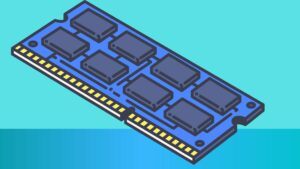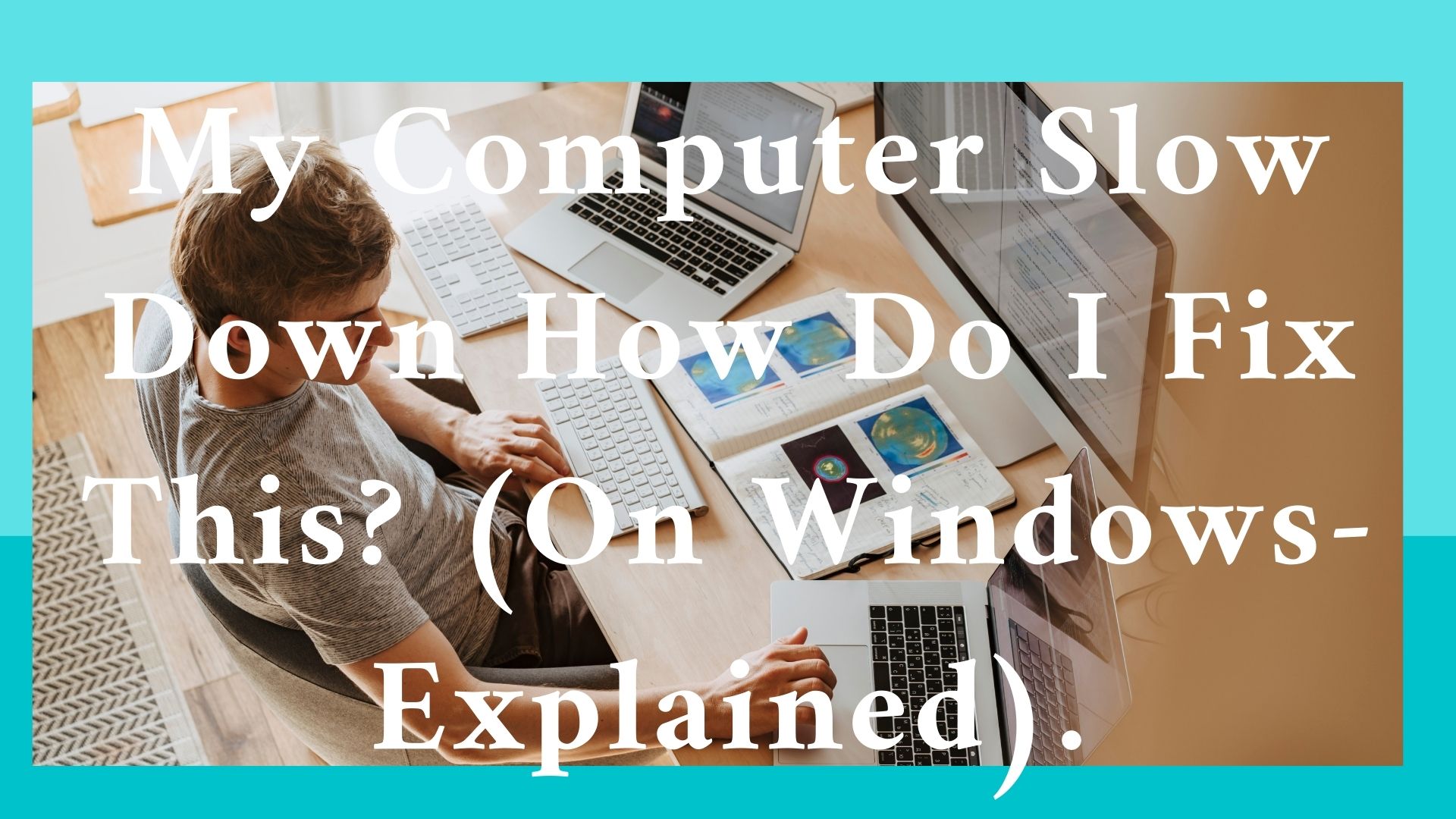If you find your computer slows down and doesn’t function the way it used to, then boosting the settings can help improve your PC’s speed and performance.
Windows is one of the best-performing operating systems in use today, but it comes with many system resource-intensive features that can degrade your PC’s performance.
Microsoft has even added built-in features to Windows to improve overall performance. However, your PC may continue to suffer from slow performance.
Reasons such as lack of storage space, maintenance, and weak hardware can be the culprits of slow speeds.
From cleaning up unused programs and apps to upgrading your hardware, you can do a few things to speed up Windows computer bring it back to optimal performance.
How to make windows computer faster
- Check out the latest update
- Restart the PC
- Turn off launching programs at startup
- Disk Cleanup
- Remove old software
- Turn off special effects
- Turn off the transparency effect
- Run system maintenance
- Upgrade RAM
- Upgrade your storage device
Check Out the latest update
Installing the most recent Windows updates is one of the most excellent methods to maximize the performance of your computer.
Microsoft regularly releases updates to fix common bugs and system errors that degrade system performance.
Some updates are pretty minor, while others are significant changes to the system in search of the latest device drivers that can help improve PC performance.
To access Windows Update, go to Settings > Update & Security. To check for updates, select Check for Updates from the Windows menu.
Install immediately if an update is available. Restart the computer to see if it performs better.
Restart the PC
This may sound simple, but restarting your PC regularly can help speed up your system.
Many people let their PC run continuously for weeks and put the computer to sleep instead of shutting it down completely.
This will accumulate programs and jobs in your PC’s memory and slow down everyday tasks like opening programs and accessing files.
With a daily shutdown, you allow your PC to refresh its memory and be ready for optimal performance the next day.
If your PC slows down during everyday tasks like opening programs and accessing files or documents, try shutting down or restarting your PC.
Before turning off or restarting your computer, don’t forget to save your work.
Turn off launching programs at the startup.
PC performance can suffer when there are too many programs and applications open at the same time. The performance of many installers is decreased by telling Windows to launch their apps as soon as your computer starts up.
Open Task Manager and select the Startup tab to stop apps from starting when the computer starts.
Pay attention to the ‘Startup impact’ column, which tells you which programs have a significant and negligible impact on startups.
High-impact programs are the culprits slowing down your system performance.
To prevent a program from launching at startup, right-click the program you want to select and click ‘Disable.
Disk Cleanup
One of Windows 10’s built-in features is Disk Cleanup. This feature allows you to remove unused temporary files that accumulate on your PC including thumbnails, downloaded program files and temporary internet files.
Open the Windows menu and find ‘Disk Cleanup’ by searching for the program in the search bar.
After this step, you will be given a list of program files to remove. Choose the files you want to delete by checking the box next to their names.
Click “Clean up system files” after deciding all the files you want to remove. Disk Cleanup will figure out how much storage space may be released.
Take the time to delete other files and applications that take up more memory or disk space.
One place to check for old and unused files for deletion is your Downloads folder.
Remove old software
Your PC often comes pre-installed with third-party software that you may not need. These pieces of software are called bloatware and can take up a lot of storage space due to their large size and are often entirely unused.
Your PC may be sluggish due to additional installed but inactive apps. Go to: to verify installed software.
Programs and Features > Control Panel Remove a Program
Any software you no longer require may be uninstalled by performing a right-click and choosing that option.
Turn off special effects.
Windows 10 has many special effects to make the user experience more enjoyable. These effects default to Windows, and other features are programmed to appear and disappear from view.
Other unique features slowing down your machine include transparency and motion.
Select “System” from the Windows menu, then “Advanced System Settings,” “Advanced,” and finally “, Performance Settings.” Click the ‘Visual Effects’ tab and the radio button for ‘Custom’ .’ You will see a list of visual effects you can turn off by unchecking the boxes. Click ‘Apply’ to confirm the changes when you are done.
Turn off the transparency effect.
Besides using your system resources to show features like motion, Windows 10 also uses transparency effects for certain features like the task menu.
This seemingly light and straightforward effect is quite complex and takes up more system resources than you think.
To disable the transparency effect, open the Windows menu and type ‘colour settings in the search bar to open the colour settings for Windows 10.
Look for the “Transparency effects” button by scrolling down. Change the transparency setting.
Run system maintenance
Windows 10 has a built-in feature for performing routine system maintenance tasks.
This feature includes defragmenting the hard drive, scanning for updates, and checking for malware and viruses.
System maintenance usually runs in the background when your PC is idle, but you can run it manually to see if there’s something wrong with the system you want to check.
Open Control Panel and choose Security and Maintenance to accomplish this. Select “Start Maintenance” after clicking the arrow to expand the list of maintenance choices. You will be able to perform manual system maintenance checks.

Upgrade RAM
One drastic way to improve the speed and performance of your PC is to upgrade the RAM, which in turn increases the amount of memory in your system.
Windows 10 requires a minimum of 4GB to run smoothly. If you’re using your PC for system-heavy tasks like gaming or media production, you’ll benefit from having more memory.
Upgrading RAM can drastically improve the speed and performance of your PC. To check what type of RAM your PC needs, open Task manager (Ctrl+Alt+Delete), then click ‘Performance.’ You’ll see how many memory slots your PC has and the type of RAM. , for example, DDR4.
Upgrade your storage device
Upgrading your storage device can drastically improve the speed and performance of your PC.
Most PCs come with a spinning hard disk drive (HDD), but upgrading your storage hardware to a solid-state drive (SSD) will turn your system into a more powerful machine.
SSDs are typically more expensive than HDDs, but the improvement in boot time, program load time, and overall system responsiveness are well worth the investment.
SSD drives come in various sizes and depend on your PC’s system requirements. This hard drive is 2.5 and M.2 sizes for desktops and laptops.
Be sure to purchase the correct SSD that is compatible with your system. You can also transfer all your files and documents from the hard drive to the new SSD, so you don’t have to worry about losing your PC’s contents.
Tips to free up computer memory
Controlling programs at startup, reducing hardware requirements, etc., is an effective way to free up computer memory.
Large and fast computer memory will help increase the computer’s processing speed and vice versa; full computer memory will make the computer slow and frozen.
Freeing computer memory is necessary; it will help users overcome computer slowdown, increase computer memory, enable the computer to run faster, and run many programs simultaneously.
What is computer memory?
Computer memory is a technological device that holds parts of a computer and stores information used to maintain digital data; it is a textual component and core function of computers.
– Data storage devices for long-term memory include hard, floppy, Optical disc, Magnetic tape, ROM, and memory pens.
– Devices that temporarily store data during work: computer RAM, Cache…
– Most of the above memory belongs to the type of memory that can access random data, especially magnetic tape is a type of sequential access memory.
What is the role of computer memory?
Without a significant amount of memory, a tree calculator could only perform fixed operations and immediately output the results.
It will have to be reconfigured to change its behaviour. This is acceptable for devices such as pocket computers, digital signal processors and other specialized devices.
Whenever you run a program (operating system, applications) or open a file, it is temporarily loaded from the hard drive into your computer’s memory (RAM). Once loaded into memory, you can access programs and files easily.
If your computer’s memory (RAM) runs out, your operating system will start “dumping” some open programs and files into paging files.
If paging files are stored too much, your hard drive will slow down. So instead of running everything on RAM, a portion will be accessed from the hard drive.
Cause computer memory is full?
After a long time of using the hard drive, it will be complete for old computers and laptops because it has to store data.
This is why the performance of computers and notebooks slows down over time. Searching for files and programs takes longer.
These include unnecessary applications and a lot of other useless system files. Recycle bins, temporary folders (Temp Folder), and random system files can take up Gigabytes of memory.
Installing software and accessing the internet will generate many junk files that take up hard drive space.
Some tips to free up computer memory
The computer is fast or slow, opening the software or the game is heavy, but it is not frozen depending on the CPU processor and computer memory “RAM”.
Large and fast Dell computer memory will help increase the computer’s processing speed and vice versa; full computer memory will make the machine slow and frozen.
Control programs at startup
Speed Up Your Windows 10 Performance check out this video ????????
Uninstall programs that run with Windows
Uninstalling programs that run with Windows is a way to help your computer enter Win faster.
Having too many programs start at the same time with Windows will cause the computer to handle many processes simultaneously, leading to log-in time into the operating system stretched out, wasting your time.
Step 1:
To delete unneeded applications, go to Start | All programs | type Run.
Step 2:
In Windows 10, type the MSCONFIG command to search, while in Windows 7 and before, use the Run or Search dialogue box to look for MSCONFIG.EXE.
Pick startup to check what applications are set up to launch with Windows. The software will appear in the Startup panel on Windows 7 and earlier. To verify, on Windows 10, choose Open Task Manager.
Step 3:
Here, you can control which software is unnecessary or set it not to run with Windows at startup by clicking on each program and clicking Disabled.
Manage Add-ons
Add-ons applications for browsers also consume a lot of RAM computer memory. You need to check each add-on and disable them if not in use.
Step 1:
You go to Google Chrome, click on the three tiles icon on the top of the screen, select Install and access Add-ons to check the Add-ons that have been used.
Step 2:
Click on the trash can icon to delete unused utilities.
Disable unwanted services to free up RAM
Some unnecessary Windows services cause your computer to run slow, such as Windows Defender.
It takes about 20MB, even more, if you run it in the background. If you already have an anti-virus tool for your computer, you should turn off Defender to speed up your computer.
To disable the unwanted service, you can follow the below way.
Step 1:
Click Start on the computer screen, then type services.msc to start. A list of Windows services that are active will be shown.
Step 2:
To altogether disable the service, right-click an application and select Properties.
Step 3:
The settings panel appears. Click the arrow | Select Disabled | OK to finish in the Startup type section.
Even if you restart the computer, this will deactivate the software.
Suppose you want to disable it temporarily when restarting the computer. In that case, the service will automatically start; left-click it and select the square on the Dell computer screen to stop it.
Some services you can consider and disable entirely on your computer:
- If you do not have an Apple device to connect, using iTunes is not required on Apple mobile devices.
- Distributed Link Tracking Client: maintains links between files on a network of domains, not a feature we use.
- Nero BackItUp Scheduler 3: supplied with Nero Burning ROM, but not necessary if you are not using the backup tools.
- Offline Files: sound if you sync files between computers, but we don’t need to.
- According to the input service (tablet), it’s not a tablet computer.
20MB of RAM may be recovered using this approach. While removing additional services will allow you to do more, doing so could put you at risk if you also remove something necessary.
Reduced hardware requirements
If your computer has 4GB of memory, chances are you only have access to 3 to 3.5GB of RAM because the BIOS has allocated the rest of the address space to the video card, network card, and other hardware.
To check the amount of space allocated to the hardware on your PC, follow these steps:
Step 1:
Go to Start | All programs | type Run enter devmgmt.MSc at to launch Device Manager.
Step 2:
Click View | Resources by type to expand memory.
The resource part is cut off almost because of the video card. If you have a 512MB graphics card, it will probably take up 512MB or more of your computer’s memory drive.
This probably won’t be a problem if you have 2GB of RAM where no part of the memory is locked, but if you have 4GB, it will prevent you from making the most of the memory.

Turn off some effects on Windows.
There is no denying some visual effects on Windows that make this operating system more beautiful, but it is also a contributing factor to the “sluggishness” of the machine.
To turn off some effects, Windows 7 users can right-click on the desktop, select “Personalize” in the “Window Color” tab uncheck “Enable transparency” to turn off the transparency feature.
In addition, users can go to “Control Panel” and then go to “Ease of Access Center” to turn off unnecessary motion effects (Turn off all unnecessary animations).
For Windows 8 and 8.1 users, press the “Windows + S” key combination to bring up the search panel, then type “Animations” and select “Turn Windows Animations On or Off.”
Run Explorer windows efficiently.
But according to some studies, when you open every Explorer window will consume at least 10MB more RAM, so you need to be aware of this. Here is how to solve the above problem: For Windows 8, 10
Step 1:
Enter the Folder Options command in the search bar to access File Explorer Options.
Step 2:
At the File Explorer Options interface, uncheck Launch folder windows in a separate process in the View section and click OK.
Free up RAM by minimizing unused or background applications and programs
If you are running an application, it will consume RAM, but one way to free up computer memory is to minimize it.
If an application doesn’t do anything when minimized, Windows will reclaim its memory to make it available to other applications.
Therefore, minimizing inactive programs rather than leaving their windows on your desktop is best. This frees up computer memory “RAM” for more essential tasks.
Avoid unclear optimization tools.
Avoid unclear, inefficient optimization tools or tricks related to memory optimization or useless programs, which even force the computer’s memory to make more room to accommodate them.
Some websites recommend the Registry tweaking program ‘AlwaysUnloadDLL’, introduced to help Windows release DLLs as soon as the program is closed. But it doesn’t work in XP or Vista.
Many websites also present RAM optimizer programs with many promises, but they can’t fix memory errors and ‘free up’ RAM (in fact, they even take up more memory).
TIPS:
- Open Task Manager to check what applications are running in the background and how much memory and CPU they consume. Run Resmon if you are using Windows 7 or a later version to understand better how your computer’s resources are being used.
Why Do Windows Crashes So Frequently?
We examined the most frequent reasons for Windows 10 crashes. As you can see, many of them are hardware-related, whether it be an incompatible driver, a broken component, or excessive heat.
Although it might be challenging to diagnose these problems, you can perhaps narrow down your issue by comparing them to these reasons.
Final thought
Your computer will operate less quickly than a new one if it is five years old. Newer computers can execute more complex software programs more effectively thanks to optimization.
Older computers operate more slowly because they can’t run these modern programs.
Another issue with outdated technology is that new software often has higher demands.
We advise you to consider getting a new computer or updating your existing one. I’ve discussed strategies to speed up your computer’s performance above.
They may be used with your computer. You will benefit from their advice and experiences, I’m sure.
Related Article:

